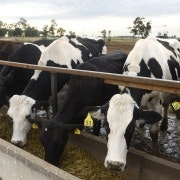ANZ's wealth of opportunity
In 2002, half-way through John McFarlane's term as chief executive of ANZ, and after considerable attention from the market on the absence of a wealth management strategy, McFarlane finally unveiled one that he himself acknowledged was sub-optimal.
He had spent much of his time and attention during that first part of his term reshaping and repositioning ANZ core banking franchises. While ANZ was introspective and in down-sizing and down-risking mode, selling its Grindlays business and closing its UK trading operations, its competitors were engaged in a scramble for scale in wealth management as they tried to protect themselves from structural shifts in the savings system away from banks and towards managed funds.
Commonwealth had taken out Colonial, NAB had acquired MLC and Westpac was about to embark on a string of acquisitions.
McFarlane, without the sharemarket rating of his peers and an underweight position in wealth management, played the cards he was dealt. Responding to the pressure for ANZ to "do something" in funds management, and acting on the basis of a conviction that ultimately the funds management sector would be dominated by global players, he teamed up in a 49:51 joint venture with ING.
The problem for that deal from ANZ's perspective is that its ability to grow in wealth management and leverage its strengthening retail position was constrained by the reality that it was locked into a 10-year partnership with ING that could only be dissolved, after 2012, with a year's notice.
McFarlane's successor Mike Smith has made no bones about his strategy. He has accumulated a big lump of excess capital to take advantage of the distress in the global banking and finance sector to acquire businesses that might never be available on the same terms again.
The acquisition of Royal Bank of Scotland's businesses in Singapore, Taiwan, Indonesia, Hong Kong, the Philippines and Vietnam for $687 million in August – at only 1.1 times fully-provisioned book values – was a perfect example of Smith's game-plan.
While much of the focus on ANZ's expansion plans has been on its Asian ambitions and its desire to be a super-regional bank, Smith has also made it clear that if there were an opportunity that made strategic sense to bulk up his domestic franchise on reasonable terms he'd happily take that too.
ING's global banking businesses have been hit hard by the financial crisis. Like many European and US banks it is selling off its outlying operations to return cash and capital to its home market and stabilise its balance sheet.
The Australian wealth and insurance joint venture represented $1.8 billion of cash, about $500 million of profit/capital and frees up about $1.5 billion of capital for the Dutch group. It represented an opportunity that, in ING's circumstances, was irresistible.
Like most wealth management business, the joint venture has been affected by the crisis. In the March half earnings for the Australian business were down from $154 million to $47 million. ANZ is paying a price based on normalised 2008 earnings – pre-crash earnings – but the multiple of 11 times those earnings and 1.2 times December 2008 embedded value appears to reflect the sea-change in conditions.
For ANZ, buying just over half of a business it knows so intimately and whose product it already distributes through its own networks, with $45 billion of funds under management in Australasia, 1700 financial advisers and the third-largest life insurance business and doing so on reasonable terms is a very low-risk and obvious deal.
ANZ now has a wealth management platform of its own and, free of a partner with balance sheet concerns and constraints, the option of building that business more aggressively and integrating it more closely with its own. It might also be able to export some of its capabilities into its developing Asian networks, where ING still retains a presence of its own.
Smith also retains some firepower – the bank's Tier 1 capital will still be 9.5 per cent after the acquisition, well above the peer averaged of 8.6 per cent. ANZ's developing flurry of acquisitions hasn't ended yet.















